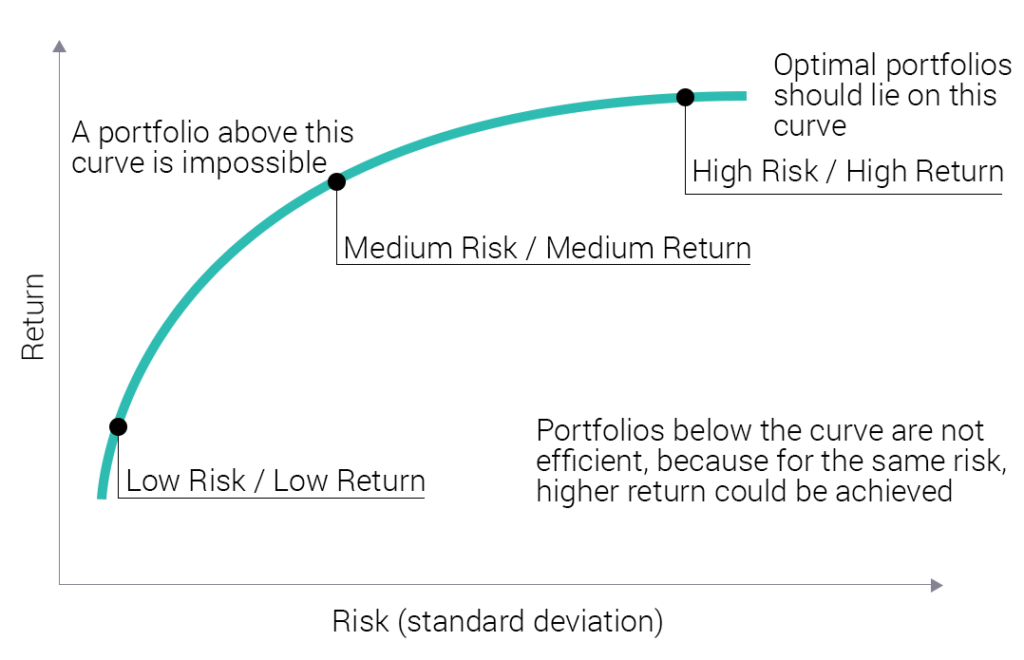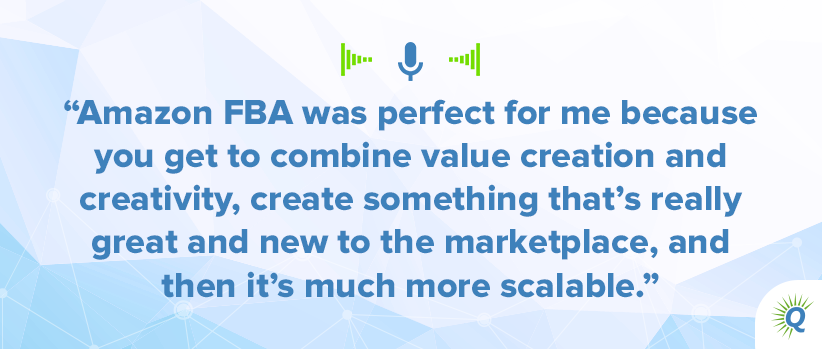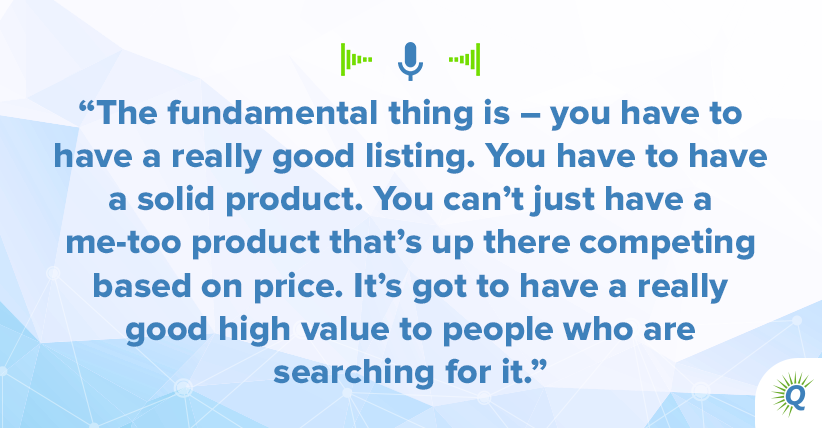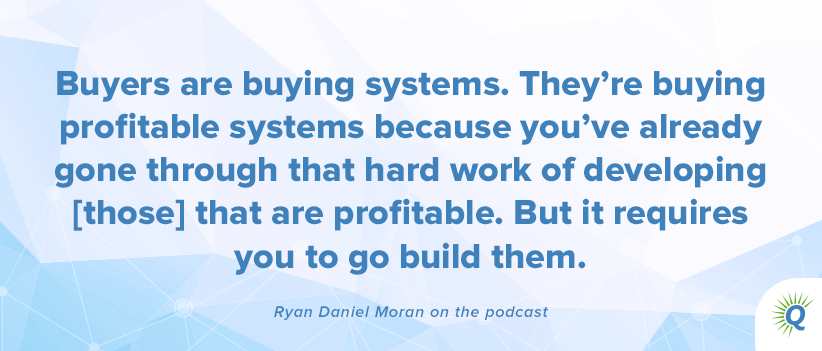Topics:
Never Miss a Beat - Get Updates Direct to Your Inbox
FILTER:


How to Crush the Competition on Amazon with the Right Ad Spend
By Quiet Light
Looking for a smart way to create value after acquiring an Amtazon business? Want to increase the value of an Amazon business you’re building from scratch?
Learn to optimize ad spend.
By all accounts, the key to scaling an Amazon business can be summed up in one word: Visibility.
If you wanted great visibility for a product a few decades ago, you’d probably have to interrupt the US consumer during one of their favorite tv shows. Think Apple launching its Macintosh with a 60-second spot during the Superbowl.
“On January 24th, Apple Computer will introduce Macintosh. And you’ll see why 1984 won’t be like ‘1984.’”
Now we don’t have to hire a famous sci-fi director; we just have to show up where consumers are already looking.And where – bonus – they’re not dozing off or catching a buzz, they’re shopping.
Reports of the glory days of the 80’s may have been exaggerated.
One way to gain visibility for your products on Amazon is to pay for it. And one way to drive your business into the ground is to pay too much for it.


Listen to the Source of this Post:
This blog post is based on a podcast episode that we recently recorded. Listen to the full episode here:Essentially, if you want to sell a product on Amazon, it must be seen; if you want it to be seen, you must pay.
But much like network television in the 80’s, Amazon’s built a powerful visibility platform. This one gives us immediate access to the highest converting consumers on the web and also handles fulfillment, so we forgive them.
Like pay-per-click on Google, paid advertising on Amazon comes with its own set of strategies and best practices, as well as the potential for expensive mistakes.
And according to Mike Zagare, founder of PPC Entourage, those best practices all hinge on one thing – your ability to find out what the customer really wants.
Around the time that he convinced his board to spend $800,000+ on that iconic Super Bowl ad, Steve Jobs famously agreed with Henry Ford about customers. He commented that, “people don’t know what they want until you show it to them.”
Mike Zagare, and most other Amazon experts, would probably disagree.


Zagare has spent years perfecting the process of gaining visibility on Amazon by figuring out what customers want and giving it to them. And he’s crushing the competition in the massive pet space as a result.
Now, through his own SaaS company, he’s sharing that process and helping other Amazon private-label sellers do what he did.
Let’s look at how Mike went about building and scaling his own company. We’ll also check out the specific practices he recommends after years of trial and error for optimizing ad spend and staying ahead of the competition.
What’s to Love about Paid Ads on Amazon?
Mike’s Formula for Keeping Ad Spend under Control
5 Tactics to Optimize Ad Spend and Grow Your Business
1. Find the right keywords and control the cost.
2. Eliminate the wrong keywords.
3. Capitalize on the right opportunities.
4. Use all your real estate and be creative.
5. Don’t stop with getting traffic.
The best way to crush the competition?
What’s to Love about Paid Ads on Amazon?
After an early debacle with retail arbitrage, Mike started private-label selling on Amazon with a single cat product. He’s since leveraged success with that single product into a prosperous brand.
How did he go about that?
- He found a niche in the marketplace that he knew and understood and solved a problem in that niche
- He was the first to the market with his solution (a cat litter product).
- He reinvested all the cash from the first product to branch out and launch new ones.
- He chose new products by analyzing his Search Term Reports from the existing products. He looked for gaps between what customers were searching for and what they actually purchased and set out to fill those gaps with new products.


Cross-selling has been a major strategy behind his brand’s success.
Now he’s able to focus heavily on building the brand, building relationships with customers while engaging them on other platforms outside of the marketplace, and creating brand loyalty.
Ask Mike what he loves about paid ads on Amazon, and he gets pretty excited about it:
- It allows you to get topline visibility for a new product from the beginning.
- Once you build an audience, you can target them specifically along with specific keywords.
- You have the opportunity to create multiple touchpoints with the customer around major keywords, which results in “massive visibility.”
Mike’s “swarming the competition” approach relies exactly on those multiple touchpoints. It’s a way to build trust and credibility with shoppers on the platform through maximum visibility.


This approach entails combining sponsored brand ads (Headline Search Ads) at top of page with sponsored product ads that connect directly to your listing and organic placement.
Aside from this swarming approach, the other key to Mike’s strategy is to constantly analyze and then optimize his spending.
Mike’s Formula for Keeping Ad Spend under Control
One critical metric that Mike uses to optimize ad spend is ACOS (Average Cost of Sale).
He says, with private-label products, he’s confident he’s not overspending and can scale up as long as his ACOS doesn’t exceed 40% of profits or 10% of revenues.
For instance, if you’re spending $10k per month on ads, but making $100k per month in revenue and $25k profits, all is well in the private-label space.
Or as Mike puts it, “If you’re spending $400, you want to make $1000.”
If ad spend creeps over that 10% mark, that means you’re bid prices may be too high, you’re wasting money bidding on ineffective keywords, or you’re not taking full advantage of your top most effective keywords. And that means it’s time to optimize.


5 Tactics to Optimize Ad Spend and Grow Your Business
According to Mike, when it comes to gaining maximum exposure at the minimum cost, you should begin with the Search Term Report.
To get to your Search Term Report, log into your Seller Central account. Then:
- Under the “Sponsored Products” tab click on “Ad reports” on the top right.
- From the “Report Type” dropdown menu, choose “Search Term.”
- Name the report.
- Choose a date range to analyze (at least 7 days so you have enough data) next to “Report Period,” and click “Apply.”
- Then from the “Data Unit” dropdown, choose “Daily,” and click on the “Create Report” button on the left.


On the report, you’ll find, among other things, the following totals per keyword:
- Number of clicks
- Number of converted orders after a click
- Number of product sales after a click
- Cost Per Click
Now you’ll have the raw data you need to make the most educated decisions possible regarding your bidding strategy.
Keep in mind that Mike doesn’t consider this a one and done event, but a continual process. You should be pulling these ad reports regularly.


Based on what you find in your Search Term Reports, these are the strategies Mike uses to keep spending under control while maximizing brand exposure and sales:
1. Find the right keywords and control the cost.
Obviously, you’ll want to look for the search terms that are bringing in sales. But once you find those, analyze the cost.
Mike says you need to determine the number of clicks you’ll have to pay for in order to get a sale, and then adjust your bid price accordingly.
When you lower your bid price, you lower your CPC.
How many clicks will it take to get a sale? And then how much are you willing to pay for each click? Remember, overall you want the ACOS for the keyword to be at 40% or less of profits from that keyword.


2. Eliminate the wrong keywords.
Next, Mike advises, you’ll find those keywords that don’t bring in enough or any sales and stop them from draining your campaign budget.
It’s just as important to find the keywords that don’t work as it is to find the keywords that do. And it’s a great way to lower ACOS.
Those search terms that are getting lots of clicks but not getting sales are like leaks that need to be sealed.
By flagging the terms that you don’t want to show up for, you’ll make sure your ads appear for only the most relevant searches.
For example, if you’re selling a snow shovel, you may find that you need to remove the more general term “snow removal” or the specific yet irrelevant term “snow blower.”
Odds are that some of these terms may be getting clicks but not sales and could be nudging your ACOS up.


Mikes says as a general rule of thumb, a keyword that gets 10 clicks or more without a sale or with a very high ACOS needs attention.
Negative keywords can be added at the Ad Group or the Campaign level. In terms of match type, most negative keywords you add will be Exact Match, though you may use Phrase
Match at times as well.
3. Capitalize on the right opportunities.
Next, Mike says, look for keywords that are your very best performers. For these terms, clicks are high and the ACOS is low.
Mike says when it comes to these high performers, you may be paying an opportunity cost if your bid price or campaign budget is too low.
If a campaign is working for a particular keyword, and working well, you should increase your spend and maximize the exposure for that keyword/ad combination.


As Mike puts it, give Amazon “more room to breathe” and let them spend more, as long as you keep it within your ACOS target.
I’m reminded here of Ryan Daniel Moran, who on the podcast a couple months ago said that one of his regrets – a mistake he learned from along the way to his 8-figure exit – was not spending more.
When you’re not spending in the right places, you’re missing out on revenue.
With software like Mike’s, luckily we’re now able to analyze keywords in bulk, find what’s working, and avoid that very mistake.


4. Use all your real estate and be creative.
Another opportunity cost that some sellers are paying, Mike points out, is found in their listings.
Mike advises being creative with your listing while keeping cross-selling opportunities top of mind.
For his own products, he likes to build listings that incorporate the entire product line.
How to do that?
- Have one image in each listing that shows a visual of all the products in your line.
- Add a bullet point that refers to the complete line of products and explains that this is one of many.
- Include a coupon code in the listing that allows the customer to purchase another product in your line at a discount.
- Brand owners can use enhanced brand content to add tailored, customized content, including images, to their listings.


5. Don’t stop with getting traffic.
A final great tip from Mike is to think beyond traffic on Amazon to a bigger set of brand goals when building your campaigns.
In other words, once you have customers and traffic to your listings, then what?
According to Mike, then you think about building loyal customers and engaging them.
Sending them to your website to register for a coupon and get on a mailing list. Retargeting them with an email sequence.
As well, you should be constantly expanding your offerings and reinventing. Mike says, “if you’re not reinventing, I feel like entropy’s going to take place. That’s just inevitable.”
The best way to crush the competition?
Follow Mike’s tips and optimize continuously, don’t set it and forget it.
Create systems in your business that they aren’t willing to put in the time to create, such as templates for the more innovative listings that he recommends.
Solve problems for your customers that they aren’t solving.
Engage in continual product development and reinvest in ways that they aren’t willing to.
Dig deeper into your data and get to know your customer better than they ever will.


Advertisers in the days of mass media had psychology and theories about what people wanted, and they used it well. Along with elaborate sets and big production budgets.
The irony of that “1984” ad from Apple was that in some ways it was operating in a world a little too much like the one it showed on screen for comfort.
Hindsight is 20/20.
Now we can see what customers want by looking at what they actually search for. We don’t need to manipulate them by appealing to their worst fears.
We don’t have to interrupt a Netflix binge, we just have to be there when they go looking for our products.
We have concrete data now and, with the help of entrepreneurs like Mike Zagare, the software to analyze that data.
And we can use it to give the customer exactly what they want. Revolutionary.





